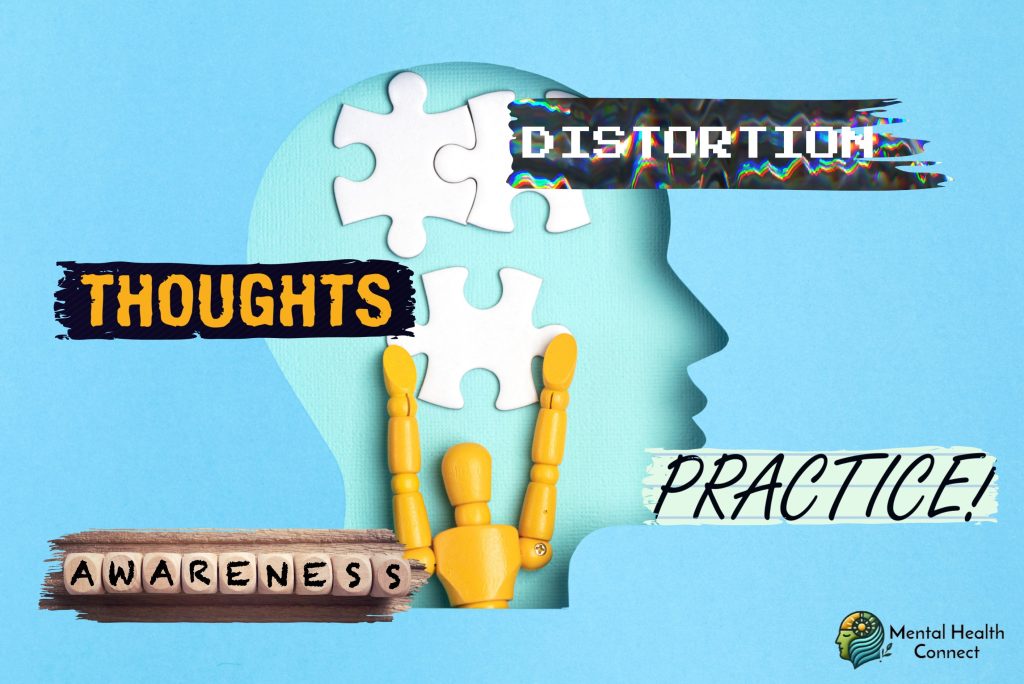From Negative to Positive: How Cognitive Reconstruction Can Change Your Life

The lens through which we view our experiences dramatically influences how we feel, behave, and ultimately, the quality of our lives. When that lens becomes clouded by negative thought patterns, everything darkens but there’s a powerful technique that can help clear the view. Cognitive reconstruction offers a pathway to transform destructive thinking and open up new possibilities for happiness and fulfillment.
The Power of Our Thoughts

Our minds generate thousands of thoughts daily, creating an internal narrative that guides our emotional responses and behaviors. Many of these thoughts occur automatically, outside our conscious awareness, yet they profoundly impact how we experience life. When negative thinking becomes habitual, it can lead to a downward spiral affecting our mental health, relationships, career, and even physical wellbeing.
The good news? Thoughts are not facts. They’re mental events that can be examined, challenged, and changed. This is where cognitive reconstruction enters the picture.
What Is Cognitive Reconstruction?
Cognitive reconstruction (also known as cognitive restructuring) is a therapeutic technique that helps identify irrational or unhelpful thought patterns and replace them with more balanced, realistic alternatives. It’s a cornerstone of cognitive-behavioral therapy (CBT), one of the most evidence-based approaches in psychology today.
The process involves becoming aware of automatic negative thoughts, recognizing the distortions they contain, challenging their validity, and developing healthier thought patterns that better serve your wellbeing and goals.
Common Thought Distortions
Before we can change our thinking, we need to recognize problematic patterns. Some common cognitive distortions include:
- Catastrophizing: Imagining the worst possible outcomes (This headache must be a brain tumor)
- Mind reading: Assuming you know what others are thinking, usually negatively (She thinks I’m incompetent)
- Filtering: Focusing exclusively on negatives while ignoring positives
- Overgeneralizing: Applying one negative experience to all situations (I always mess up important presentations)
- Should statements: Rigid rules about how things should be (I should never make mistakes)
- Personalization: Taking excessive responsibility for external events (The project failed because of me)
The Reconstruction Process

1. Awareness: Catch Your Thoughts
The first step is simply noticing negative thoughts as they arise. This mindful awareness creates space between you and your thoughts, allowing you to observe them rather than being consumed by them.
Try asking yourself throughout the day: What am I thinking right now? Pay particular attention during moments of strong emotion, as these often signal automatic thoughts at work.
2. Identify the Distortion
Once you’ve caught a negative thought, examine it for cognitive distortions.Labeling the specific distortion helps demystify the thought and reduces its power.
3. Challenge the Thought
Next, question the validity of your thinking. Consider:
- What evidence supports this thought?
- What evidence contradicts it?
- Are there alternative explanations?
- Is this thought helpful or harmful?
- What would I tell a friend having this same thought?
4. Create Alternative Thoughts
Based on your challenge, develop a more balanced perspective. This isn’t about forced positivity it’s about accuracy and helpfulness. A balanced thought acknowledges difficulties while maintaining perspective and hope.
For example, I’m terrible at public speaking might become Public speaking is challenging for me, but I’m improving with practice and preparation.
5. Practice and Reinforce
Cognitive patterns develop through repetition. The more you practice this process, the more natural it becomes. Eventually, balanced thinking starts to occur automatically, creating an upward spiral of improved mood and functioning.
Real-Life Applications

Professional Growth
Consider Sarah, who received constructive criticism on a project. Her automatic thought was, My boss thinks I’m incompetent. I’ll probably get fired. This catastrophizing led to anxiety and avoidance behaviors.
Through cognitive reconstruction, Sarah identified the distortion and challenged it with evidence: her consistently positive reviews, her boss’s supportive demeanor, and the fact that everyone receives feedback. Her reconstructed thought became: Getting feedback is part of growth. My boss is trying to help me improve, which shows she’s invested in my development.
This shift allowed Sarah to respond constructively to the feedback rather than defensively, ultimately strengthening her professional relationships and performance.
Relationships
Jason experienced frequent conflict with his partner. His automatic thought was, She never appreciates anything I do, leading to resentment and withdrawal.
By examining this overgeneralization, Jason recognized times when his partner had expressed appreciation. His reconstructed thought became: While I sometimes feel unappreciated, there are many instances when she’s shown gratitude. We might have different ways of expressing appreciation.
This perspective helped Jason approach conversations more openly, leading to better understanding between the couple.
Health Challenges
After a health setback, Maya thought, I’ll never feel normal again. What’s the point of trying? Through reconstruction, Maya developed the thought: Recovery isn’t linear. I may have setbacks, but each small step I take toward self-care contributes to my overall wellbeing.
This balanced perspective motivated Maya to continue rehabilitation exercises and gradually rebuild her strength.
The Science Behind the Change
Cognitive reconstruction isn’t just positive thinking it’s backed by neuroscience. Our brains exhibit neuroplasticity, the ability to form new neural connections throughout life. When we consistently practice new thought patterns, we literally rewire our brains.
Research shows that cognitive restructuring techniques can reduce symptoms of depression, anxiety, and other mental health challenges. They also improve resilience, problem-solving abilities, and overall life satisfaction.
Starting Your Reconstruction Journey
Begin with these simple steps:
- Keep a thought journal for a week. Note situations, automatic thoughts, emotions, and behaviors.
- Review for patterns of distorted thinking.
- Select one common distortion to focus on first.
- Practice the reconstruction process daily with thoughts in this category.
- Celebrate progress, no matter how small.
Remember, cognitive reconstruction is a skill that improves with practice. Be patient with yourself as you develop this new mental habit.
When to Seek Support
While self-help approaches can be powerful, working with a trained therapist can accelerate progress, especially for deeply entrenched thought patterns or significant mental health challenges. A therapist can provide personalized guidance, accountability, and support throughout the reconstruction process.
-
 How to Support Someone with OCDApril 17, 2025
How to Support Someone with OCDApril 17, 2025 -


Leave a Reply